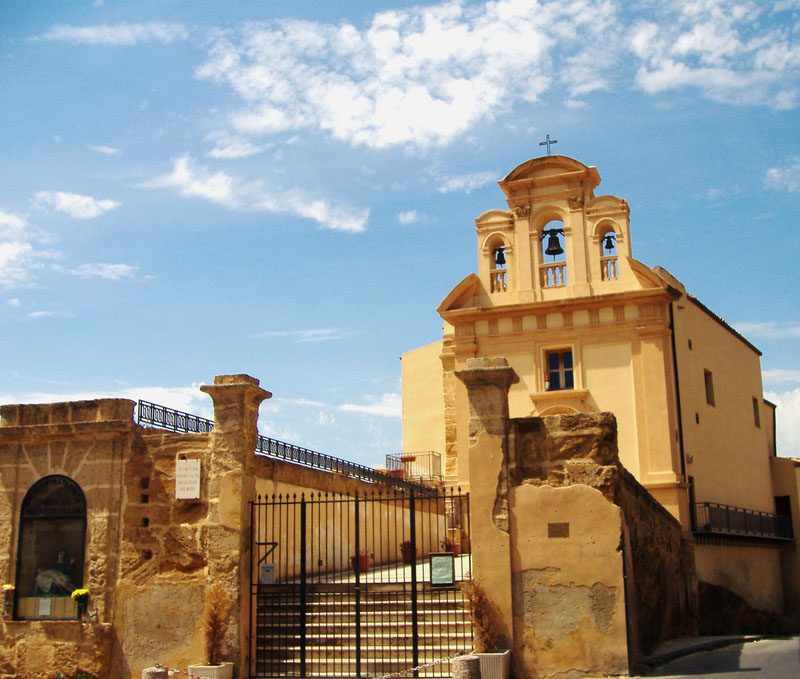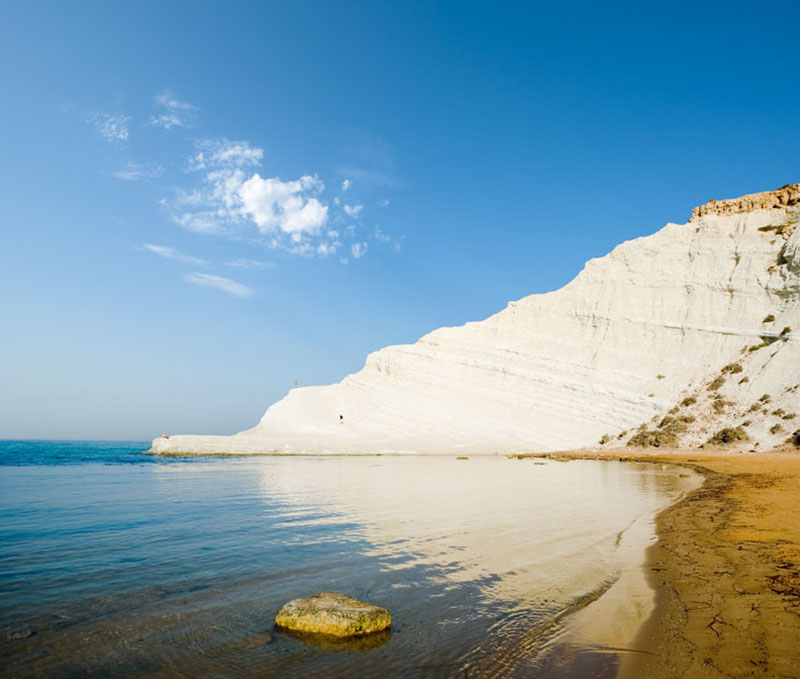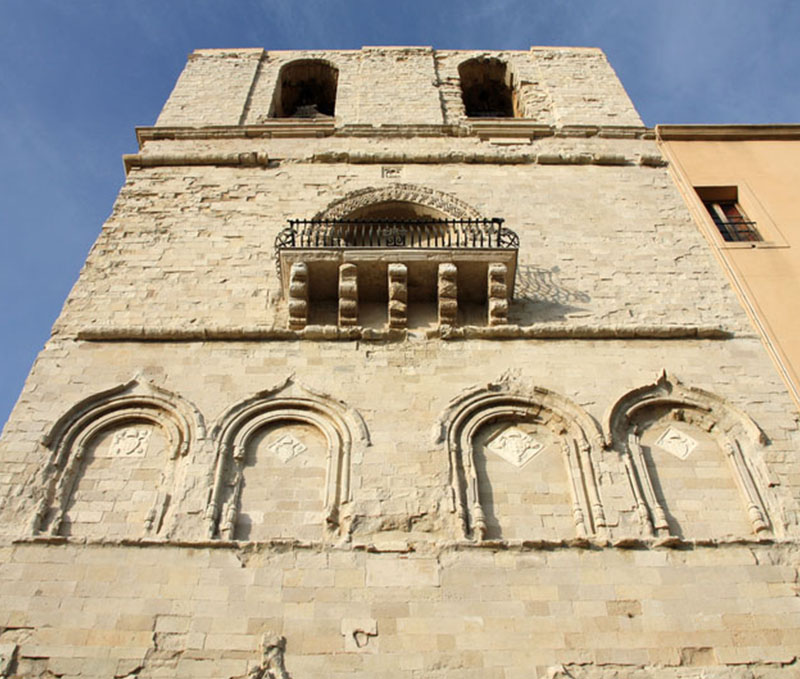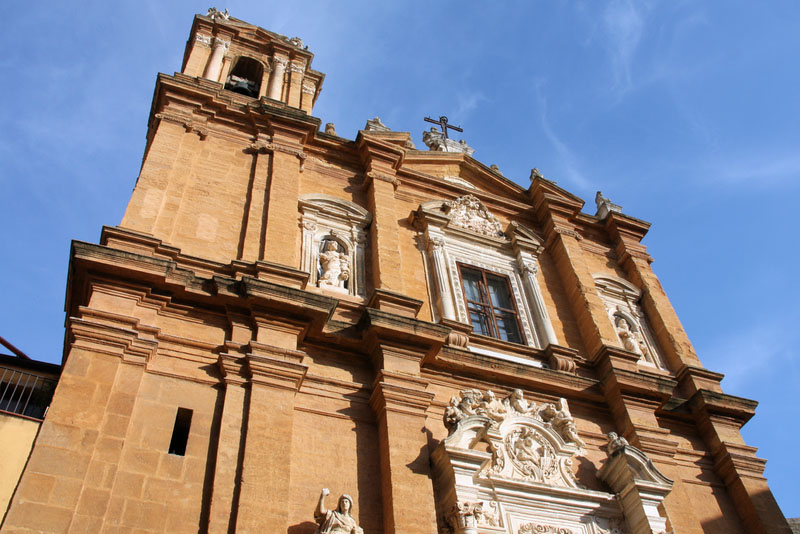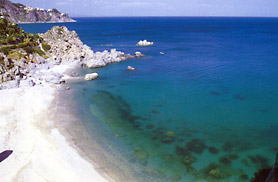The city of Agrigento is located on top of a hill overlooking the suggestive Valley of the Temples.
Agrigento is famous for its rich archaeological heritage of ancient Greek site in the Valley of the Temples and for the remains that testify the ancient settlements of Roman, Arab and medieval period.
The Valley of the Temples is surrounded by a beautiful natural environment characterized by the green vegetation of the surrounding fields with cultivations of Saracens olive trees and almond trees.
It offers visitors an enchanting landscape, especially in spring during the flowering of the almond tree.
Rich of historical testimonies, Agrigento is one of the most important destinations of tourist cultural interest in Sicily.
In the city we recommend visiting the old town where you will find the Church of San Calogero, from medieval period, with its beautiful internal decorations realized by the sculptor Serpotta.
Near the church you can visit the ex-monastery with the Cloister, where there are portals in the Gothic style rich of magnificent decorations.
The celebrated Monastery of the Holy Spirit, said the Great Abbey, which was built by the noble family of Chiaramonte, with its architectural details such as the portal of the '300 and the rose window in Gothic style, inserted in the facade in Baroque style, with inside the preserved splendid stuccos realized by the artist Serpotta, a holy water stoup of the '500 and a Madonna realized by the artist Gagini.
The Church of St. Mary of the Greeks, built in the ‘200, with the beautiful ancient windows and with the numerous frescoes of local art on the inside; under the church there is an ancient Doric temple of the fifth century a.C., of wich remain only a few remnants.
The magnificent Cathedral, located in the area where was the site of the ancient Temple of Jupiter, lined by a bell tower of the ‘400, with inside the painted wooden ceiling, stuccos and frescoes of the baroque age that enrich the whole; in chapel of the left nave are preserved artistic wardrobes of the ‘700, a rich collection of vestments and sacred objects and a Madonna with child realized by the artist of Gagini school; while in the Archives is preserved the famous letter to the devil, according to legend, addressed to Sister Maria Crucified.
The Church of Purgatory, also known as the Church of San Lorenzo, with an elegant facade, a massive portal, a bell tower, the allegorical statues, the rich decorations and the stuccos on the inside as the statues of Serpotta representing the Virtues and a Madonna of the Pomegranate realized by the artist of Gagini’s school.
Near the church there is the entrance to the Hypogeum of Purgatory, a network of underground caves dating from the fifth century a.C., which were used for the water supply of the city.
The Church of San Giorgio, with an elegant Gothic portal.
Near the church there are other buildings in the baroque style, including St. Catherine's Church, the Church of San Francesco di Paola and the Church of the Addolorata.
The city is rich of interesting museums, including the Museum of the Cathedral which houses various precious objects including the sarcophagus of Phaedra.
The Episcopal seminary, said the Steri, which houses the remains of the former castle of the Chiaramonte family.
The Archaeological Museum which houses a collection of antiquities dating back to the prehistoric, greek, roman and medieval periods as well as a collection of paintings from various periods.
In the museum you can admire the Efebo archaic, dating from the fifth century a.C., a statue of Venus (or Aphrodite) to the bath, several Greek vases, some lion heads, precious terracotta and marble sarcophagi and the crater, a masterpiece Greek ceramics , which depicts the myth of Perseus and Andromeda.
The Belvedere of the city offer a really suggestive panoramic view of the Valley of the Temples and the entire Mediterranean coast.
Surroundings: In the surroundings of Agrigento you can reach San Leone, just 5 km from the city, where there is a beautiful and popular beach which is situated near the river mouth of San Leone.
Porto Empedocle is located on the coast going in direction of the west towards the sea.
Here you can visit the impressive Bastion of Charles V.
In a district near Porto Empedocle, called contrada Kaos, you can visit the Birth House of Luigi Pirandello with inside the small Pirandellian museum.
From Porto Empedocle you can take the boat to reach the island of Lampedusa.
A short distance from Porto Empedocle, in locations Realmonte, there is the splendid and original beach of Scala dei Turchi.
The Scala dei Turchi is composed of a white limestone cliff that descends gradually, as a natural staircase, on the deep blue sea.
The contrast of colors between the white rock and the deep blue sea creates an enchanting landscape.
